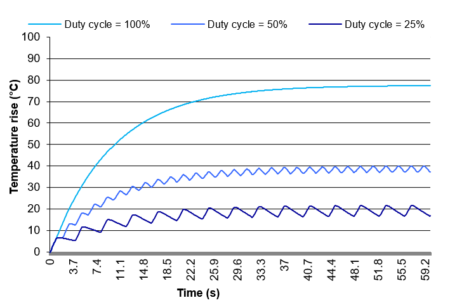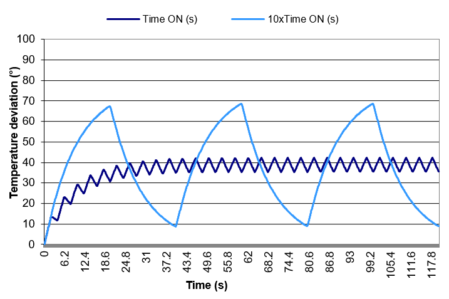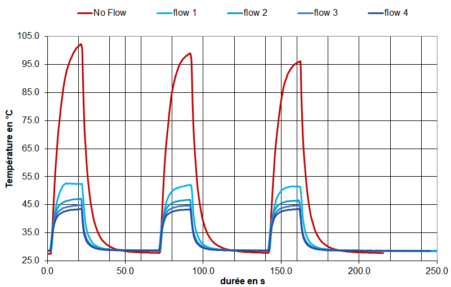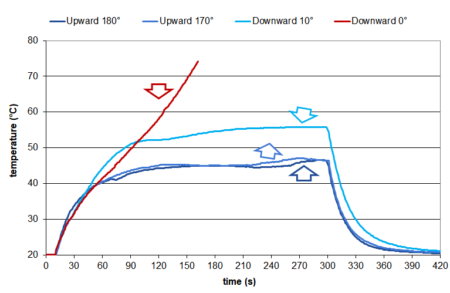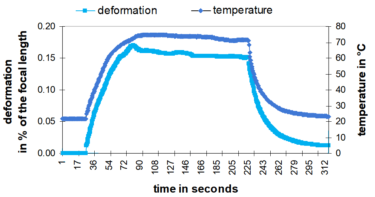The capacity to generate a high level of acoustic power is one of the essential characteristics of a transducer for therapeutic applications.
One of the main factors limiting transducer’s power is the rise in internal temperature caused by the production of heat. This heat production results from losses during the conversion of the electric energy into acoustic energy.
Transducers for therapeutic applications are designed in such a way as to minimise losses and to evacuate the heat produced towards an external medium, directly or by the means of a coolant.
However, even after defining the design, the internal temperature of the transducer still depends on the configuration of the excitation cycle and the cooling conditions.
